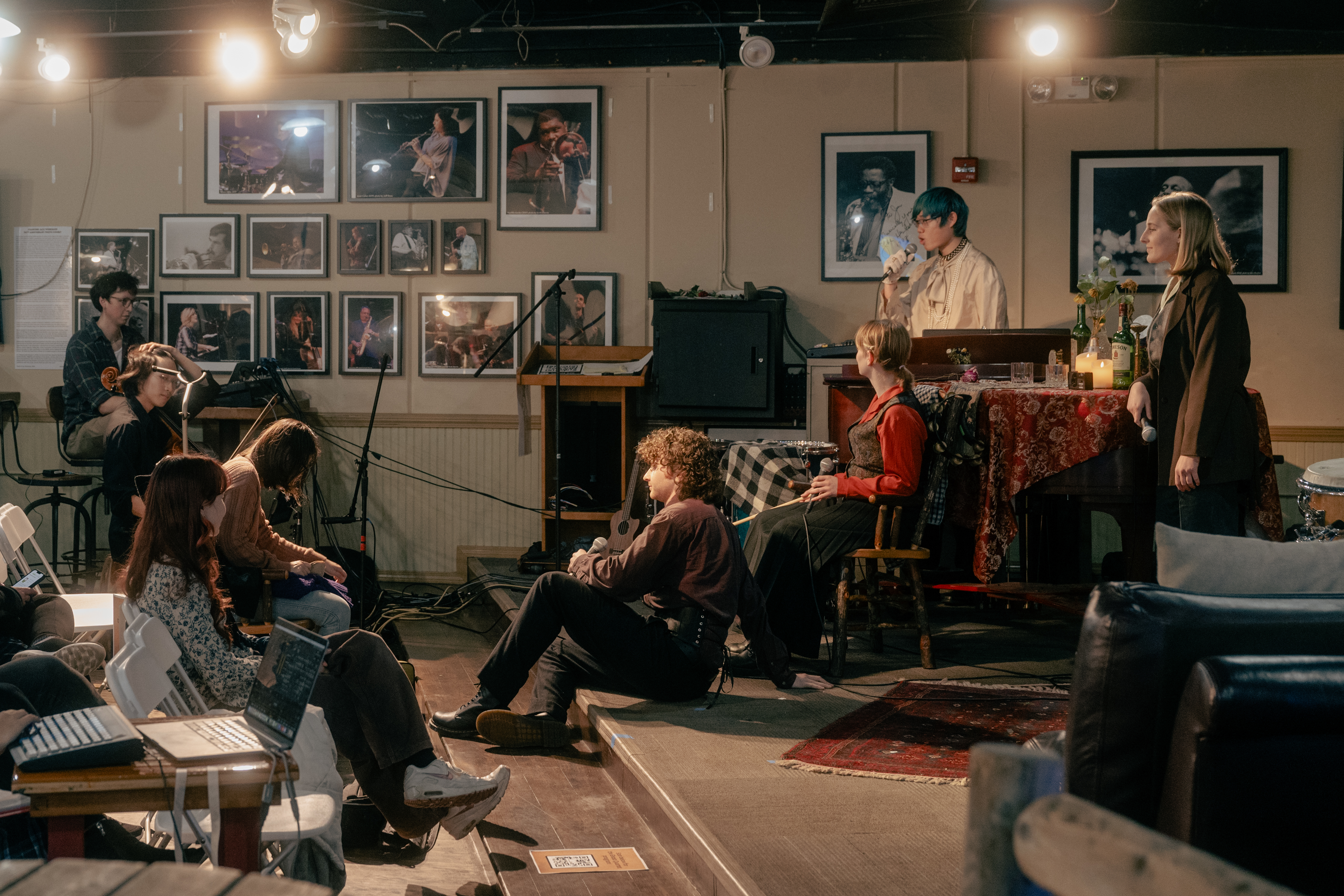Editor’s Note: This article is a review and includes subjective thoughts, opinions and critiques.
Theater Lab performed an intriguing rendition of Dave Malloy’s “Ghost Quartet” last weekend at CoHo, marked by unconventional storytelling and musical depth. The show, which featured four interwoven narratives spanning seven centuries, delivered a complex tapestry of “love, death and whiskey” that, at times, proved challenging to follow.
The show eschewed the familiar narrative framework in favor of a more fragmented, cyclical approach to storytelling. From the mystical tales of Scheherazade and Dunyazad in 14th-century Persia to the tragic sibling rivalry between Rose Red and Pearl White in 17th-century Germany and Japan, “Ghost Quartet” threaded different plotlines together in fascinating ways. The story extended to the modern day and culminated in a 21st-century New York City subway tragedy, illustrating the cyclical nature of the show’s themes.
Throughout each tale, themes of ambition, revenge and the quest for love intertwined, demonstrating the timeless and universal nature of these human experiences.
The lack of a traditional storytelling arc in “Ghost Quartet” added a layer of complexity that, while artistically bold, occasionally made it challenging to discern a coherent overarching plot or to fully invest in the characters’ journeys. The transitions between tales felt abrupt at times, leaving little room for the narrative or emotional development typically facilitated by a more linear progression.
Despite the show’s convoluted plot threads, the four actors showcased their range and versatility as they transitioned between various characters and epochs.
Both an actor and director, Sam Howell Petersen ’24 shone through their portrayals, bringing to life characters like Scheherazade, Pearl White, Soldier and Lady Usher with remarkable physicality and vocal skill. Their performance was not just acts, but evocative embodiments, marking the production with memorable depth and dynamism. Petersen’s ability to convincingly inhabit multiple roles underscored the intricate storytelling and thematic richness of the piece.
Peter Li’s ’25 contributions were also multifaceted, showcasing both his musical talent as a pianist and his capacity to bring humor and a distinct personality to his performances as Monk, Astronomer and Driver. His ability to blend comedy with musical skill added a unique layer to the show, making his performance memorable and engaging.
Among the song cycle, “Any Kind of Dead Person” and “The Astronomer” emerged as my personal favorites, as I resonated deeply with their evocative melodies and poignant lyrics. However, the show’s diverse musical landscape meant that not every song managed to strike the same chord, with certain pieces overshadowing others in their appeal. Some songs felt inconsequential to the central plot of the show and lasted longer than I felt was necessary.
The finale, “The Wind & Rain,” transformed the theater into an interactive space, creating an unforgettable communal experience. The boundary between performers and spectators blurred as percussion instruments were distributed among the audience and participants were invited to play alongside the musicians. This immersive element not only captivated the audience, but also beautifully echoed the show’s themes of connection and the cyclical nature of storytelling, culminating in a collaborative and resonant conclusion.
Regardless of the occasional obscurity of its plot, “Ghost Quartet” was a testament to the power of music and imagination, woven together in a tapestry as intricate and mysterious as the narratives it sought to tell.
